The Literature Luncheons at ILA 2016 will offer twice the inspiration, twice the star power.
At each event, there will be a pair of award-winning children’s authors—as opposed to the one-author format of years’ past. There will still be luncheons for the Primary, Mid-Level, and YA categories, meaning six authors will be featured in total.
The new format lent itself well to an idea for this year’s feature: Let each author be the interviewer and quiz his or her luncheon partner. With three questions each, their curiosities ranged from the fantastic to the practical. Some even showed what fans they are of their peer’s work.
First up, the early grade authors. Veteran writer Tomie dePaola has more than 40 years’ experience and 200 books under his belt—such as the popular Strega Nona series. When he and author/poet Nikki Grimes (author of works such as Chasing Freedom: The Life Journeys of Harriet Tubman and Susan B. Anthony and the Dyamonde Daniel series) asked each other about their careers, they discussed how their passions are about more than literature. DePaola explores his spirituality in many of his works, while Grimes explores her faith in people’s ability to rise above racism.
 Tomie dePaola: In your essay, “Lessons From Charleston,” I was especially taken with “as a seedling, hatred can be uprooted early on.” Can you give us at least one practical thing we can do to “uproot hatred,” especially in our books?
Tomie dePaola: In your essay, “Lessons From Charleston,” I was especially taken with “as a seedling, hatred can be uprooted early on.” Can you give us at least one practical thing we can do to “uproot hatred,” especially in our books?
Nikki Grimes: As creatives, the matter-of-fact inclusion of diverse characters in our books itself does much to poke holes in the notion of “the other” as inherently bad, or scary, or strange, or worthy of hatred. In words and images, we can do much to dislodge the seeds of racism and hatred planted in the hearts and minds of the young. The letters I receive from readers of all races tell me so. As for all adults who act as gatekeepers of literature, we can choose to make such books available to all of our children. Where better to introduce a child to the multiplicity of races and cultures in our world—and to our common humanity—than between the pages of a book?
NG: You’ve published a considerable amount of religious titles over the years. How has your faith informed your art and not just in these books, but in general?
TD: From my early childhood, I loved the stories of the Holy Family and the saints. Those stories read like the best fairy tales and legends. And, when I graduated from the art school at Pratt Institute in 1956, the book world wasn’t quite “ready” for me. So, I concentrated on liturgical art doing murals, Christmas cards, vestments, church decorations, and other “sacred art.” It was the way to express my “interior” life as well as my “artistic” one. Eventually, when I began to do books, one of my editors, Margery Cuyler at Holiday House, encouraged me to explore my spiritual side in children’s books. That began it. I feel very fortunate and blessed to be able to express all parts of myself in everything I do.
TD: Among the wonderful things on your website is the “gallery” of your paintings. Have you ever considered (or wanted) to illustrate one of your own books? Or a book by another author?
NG: I have considered illustrating a book of my own, but I haven’t yet hit upon just the right subject. I do ponder the possibility of, one day, doing cover art for books by other authors. Perhaps I’ll get the chance, one of these days. Mind you, the very idea scares me!
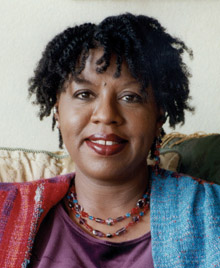 NG: It’s 2016 now, and your journey in children’s books began in 1965. How has the industry changed, and how has your work, or your approach to your work, changed over all these years?
NG: It’s 2016 now, and your journey in children’s books began in 1965. How has the industry changed, and how has your work, or your approach to your work, changed over all these years?
TD: Technology in the printing process, especially in reproduction of illustrations, is certainly one of the biggest changes in the children’s book industry, from my point of view. No artist has to do pre-separated, limited color work anymore. Everything is full color, or as the young folks call it: CMYK.
Also, I understand that 40% of illustration is done digitally. I don’t use the computer to create any work. I still use paper, paints, pencils, and brushes. So, I have to admit that I approach my work with the same enthusiasm, trepidation, and amazement (when I finish) as I always have.
When I started out in 1964, my agent signed me up for lots of different types of projects. “To get your name out there, dear,” she said. As I became better known, I think I became more selective. But it didn’t get any easier as time went by. And it still doesn’t, and I still feel the responsibility to do my very best for children.
NG: With 200-plus books published, thus far, your range is broad, from The Folklore of Love and Courtship to The Badger and The Magic Fan. What, in particular, attracts you to a project? What makes you say “yes” to one manuscript rather than another?
TD: In 1986, I signed an exclusive contract with the Putnam Publishing Group, which meant I would be illustrating fewer manuscripts by others and more by myself. The one thing that didn’t change was what attracted me to any project, and that is a good idea/good story, one that immediately captures my attention and triggers images in my head. The “story” is key—the foundation that the illustrations will stand on.
TD: [Assuming] that you remember your dreams, what age are you in your dreams?
NG: That’s a great question, but I rarely remember my dreams. When I do, I’m a young adult.
For the Mid-Level Literature Luncheon, Rachel Renée Russell, of Dork Diaries fame, and Jarrett J. Krosoczka, author of both the Lunch Lady and the Platypus Police Squad series, will be on deck. When they meet in Boston, Krosoczka will be on a mission from his 7-year-old daughter that only Russell will be able to make possible.
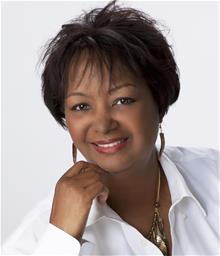 Rachel Renée Russell: What goals have you yet to accomplish as a writer and illustrator?
Rachel Renée Russell: What goals have you yet to accomplish as a writer and illustrator?
Jarrett J. Krosoczka: Well, I have yet to get my kid’s copies of the Dork Diaries books signed by the author! I missed you at the National Book Festival, so this whole ILA thing is just a rouse to get to you! In all seriousness, the first Dork Diaries was the first long-form book that my kid
read cover to cover independently. I’m lucky enough to hear similar stories from parents about the Lunch Lady books, and now that I am a parent myself I truly know how monumental
those accomplishments are. So my yet-to-be-accomplished goal? Live long enough to meet these readers of ours when they grow up. I want to shake the hand of an author or illustrator who has an old, beat-up childhood copy of Lunch Lady on his or her bookshelf.
JJK: If you could have Nikki Maxwell [Dork Diaries’ main protagonist] travel into the world of another book, where would you send her?
RRR: Being a fan of fantasy novels, I would gladly send Nikki Maxwell into the enchanted halls of Harry Potter’s school, Hogwarts School of Witchcraft and Wizardry. I can imagine her hanging out with Harry and Ron in Gryffindor House and being BFFs with Hermione. And, instead of dealing with mean girl MacKenzie and the CCPs, her arch-nemeses would be Lord Voldemort and Draco Malfoy.
RRR: You just stumbled upon a magical remote control for time. If you could “Pause,” “Fast-Forward” or “Rewind” your life, which would you do and why?
JJK: I’m on an art deadline now, so that means that I am barely taking any time off. So I think right now I’d fast-forward to just after I hand in the art and then quickly hit pause! I have two daughters, ages 7 and 4, and I love spending time with them. They hang out in my studio while I’m working, but I’m looking forward to pausing time to give them my full attention.
RRR: What are your three favorite books that you have read and why?
JJK: I’ll always go back to Beverly Cleary’s The Mouse and the Motorcycle as the gold standard of great children’s literature. I remember so clearly how that book inspired my imagination when I was a kid. I still have my childhood copy! And I recently found my childhood book report on Ms. Cleary’s work. When I hold that childhood copy in my hands, I remember the escape portal the book offered me. Whenever life around me was chaotic, I could always escape to the world held within the pages of that book. But wait. You asked for three books? OK, I have two more for you—Runaway Ralph and Ralph S. Mouse!
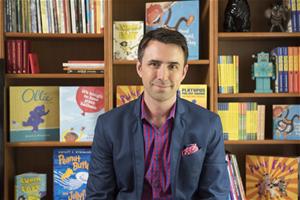 JJK: What is the dorkiest thing you’ve done since Dork Diaries have been published?
JJK: What is the dorkiest thing you’ve done since Dork Diaries have been published?
RRR: I was invited to an author signing at a local bookstore. I arrived to a room full of smiling kids waiting in line to have their books autographed. After saying hello, I started to set up the author table and unpack all of my boxes filled with Dork Diaries swag such as posters, stickers, and bookmarks. I wondered why everyone was staring and whispering because usually I get a much more enthusiastic greeting from my fans. When one kid looked really worried and exclaimed, “OMG! I think I brought the wrong book!” I suddenly realized that none of the kids had Dork Diaries books. In fact, my event was the next day and I had actually crashed a fellow author’s book signing! I’m such a dork!
JJK: What were the best words of wisdom offered to you by one of your teachers?
RRR: Both my fifth- and sixth-grade teachers in the Lakeshore School District in Michigan encouraged me to write. My fifth-grade teacher, Mrs. Eggers, let me write a play for my fifth-grade class that was presented on stage with costumes and props for our entire school. My sixth-grade teacher, Mrs. Reitz-Schultz, always enjoyed reading my stories. She told me I was a talented writer and I should consider being an author. To this day I am grateful for their encouragement and words of wisdom.
Young adult authors John Corey Whaley (author of Noggin, a Choices pick and National Book Award finalist last year) and April Henry, author of teenager thrillers such as The Body in the Woods, have a lot in common. First, their writing process; next, a struggle with anxiety; and, finally, at least for this interview, a love of Star Trek.
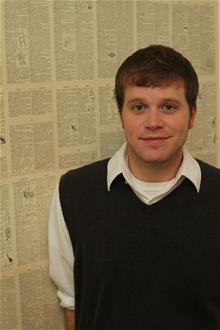 John Corey Whaley: What comes first for you—the idea or the characters?
John Corey Whaley: What comes first for you—the idea or the characters?
April Henry: For me, it’s always the idea, and it’s almost always based on a news story. Shock Point; Torched; Girl, Stolen; The Night She Disappeared; Body in the Woods; Blood Will Tell; and my newest book, The Girl I Used to Be (it publishes May 3) were all inspired by real-life events. Only The Girl Who Was Supposed to Die was made up, and even for that, I did a lot of research into bioweapons and fugue state amnesia. Getting things right is really important to me.
AH: The main character in your new book, Highly Illogical Behavior, is both a fan of Star Trek and a person who suffers panic attacks. (I can relate to both of those things.) Do you share any traits with Solomon?
JCW: All of the above. Haha. Highly Illogical Behavior was how I needed to
come to terms with my anxiety and I somehow managed to fit in Star Trek: The Next Generation, my favorite TV show as a pre-teen, and what more can I say? Solomon is very much like his creator, but also very, very different. Which, for me, is always a fun part of the experience of writing something so personal—the challenge of figuring out how to discover more about myself or humanity through this fictional alter ego of sorts.
JCW: Can you name a book that changed your life? Or one you thought would and didn’t?
AH: This isn’t a teen book, but while my friend LK Madigan (who wrote the Morris-award winning Flash Burnout) was dying from pancreatic cancer, I read A Visit from the Goon Squad by Jennifer Egan. Not only did the book bounce around in time and points of view, it was written in first, second, and third person—and even partly in PowerPoint slides.
AH: I’m going to steal your question and ask: What comes first for you—the idea or the characters?
JCW: I think the idea comes first and then, almost immediately, there’s at least one character to carry the weight of that idea for the story—so far three out of three seem to be eerily similar to myself, but, you know, who’s counting?
JCW: As a mystery writer, do you solve your own puzzles before you complete a novel or does it happen during the writing process?
AH: When you are writing a thriller, you can often start by putting your characters in a terrible situation and then throwing even more problems at them. But in mysteries, if you don’t know the solution when you start, you are going to be doing a ton of rewriting. I always know what the truth is before I begin writing a mystery.
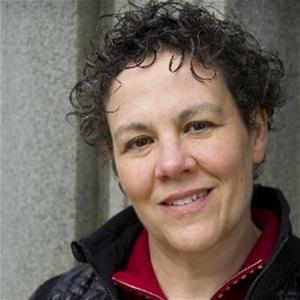 AH: Speaking of ideas, the central concept of your books certainly can’t be accused of being cookie cutter. Your books can’t be pigeonholed. How do those ideas come to you? A news story? Your mind wandering?
AH: Speaking of ideas, the central concept of your books certainly can’t be accused of being cookie cutter. Your books can’t be pigeonholed. How do those ideas come to you? A news story? Your mind wandering?
JCW: First—thank you. That’s very kind and I’ll take it! Second—I’m not always sure. Actually, I’m seldom sure where my ideas come from. But my editor and I discuss this a lot—the nature of creativity and ideas—and how maybe just maybe an artist/writer, etc., tells the story that the world around them—the cultural zeitgeist per se—leads them subconsciously to tell. And that’s why, I believe, people find the right story for the right time with some of our works—because they were looking for it without maybe even knowing it. I’m being very esoteric so thank you for indulging. And, also, lots of my mind wandering.
The ILA 2016 Conference will be July 9–11 in Boston, MA, with more than 6,000 attendees eager to cultivate new teaching practices. There will be more than 300 sessions, including several new additions to the schedule, and the popular Preconference Institutes on July 8, the weekend is sure to be a memorable one.
Learn more about what’s coming up at this summer’s conference. Register today for the conference to take advantage of special Early Bird pricing.
April Hall is editor of Literacy Daily. A journalist for about 20 years, she has specialized in education, writing and editing for newspapers, websites, and magazines.
A version of this article originally appeared in the March/April 2016 issue of Literacy Today, ILA’s member magazine.